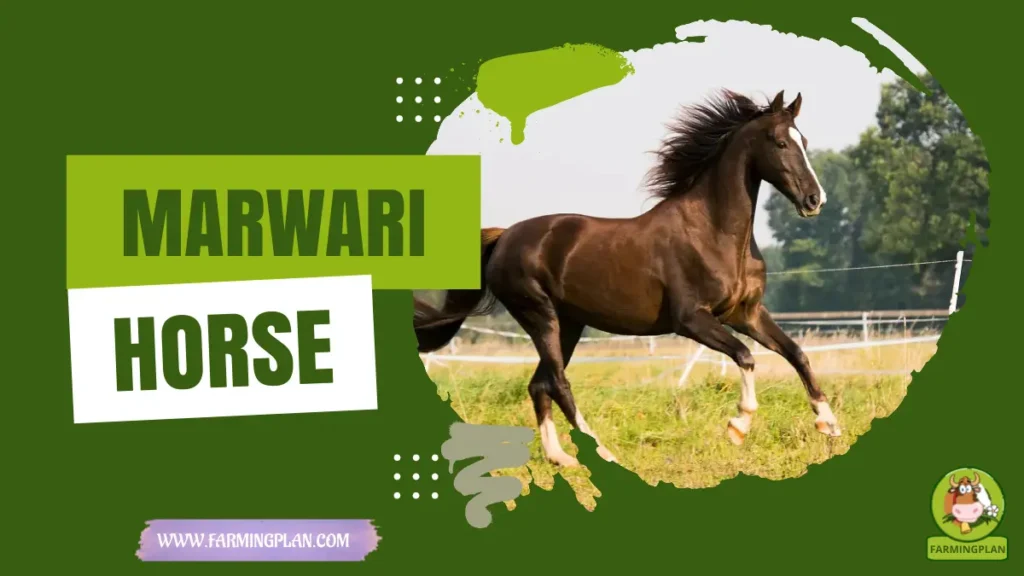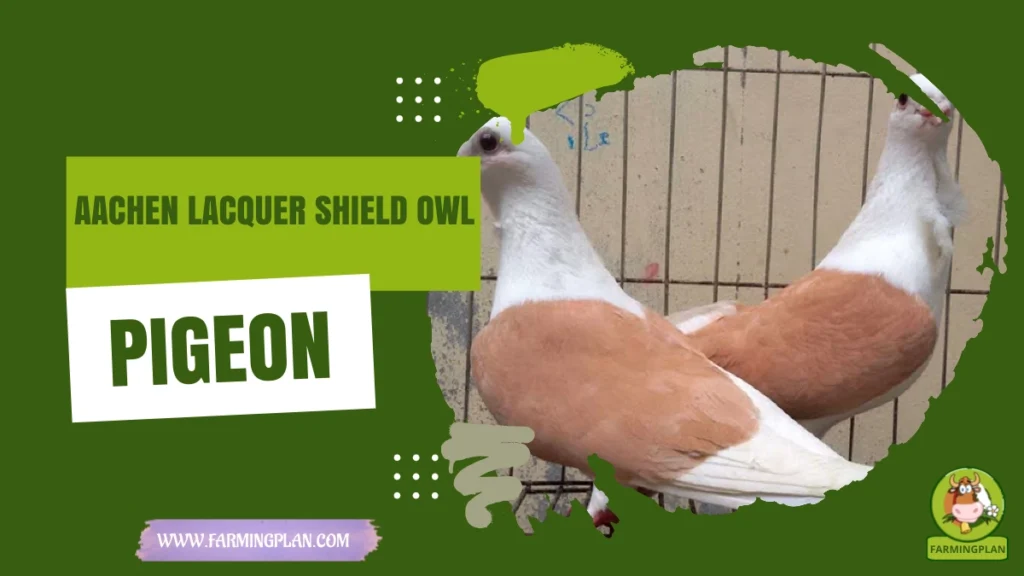The Marwari horse is more than just a horse—it’s a living piece of India’s desert history. I’ve spent years raising these curved-ear beauties in the heart of Rajasthan, and let me tell you, they’re unlike any breed you’ve met. With their bold spirit and iconic inward-turning ears, Marwari horses turn heads wherever they go. In this guide, I’ll walk you through everything I’ve learned: from their origin in the Marwar region to feeding tips, health care, and how to raise one like a pro. If you’re a pet owner, breeder, or just someone who loves horses, stick with me—this one’s for you.

History & Origin of Marwari Horse
The story of the Marwari horse begins in the dry, sun-baked sands of the Marwari horse region in Rajasthan. These horses are descendants of the mounts used by the fearless Rathore warriors. Bred for war, speed, and loyalty, they carry a bloodline that traces back to Arabian stallions and the legendary cavalry horses of India. Over centuries, the Marwari stood beside kings and nobles, especially during the time of the mighty Jodhpur Lancers. The breed nearly vanished during British rule, but thankfully, visionaries like Maharaja Gaj Singh II and the Indigenous Horse Society of India stepped up to protect it.
Their efforts, along with the Marwari Horse Society, helped revive interest and ensure that Marwari bloodlines were preserved.Today, these horses have not only found fans in India but also overseas—especially in the United States. Though export licenses are still tightly regulated, global admiration continues to grow. The Marwari horse curled ears and battle-hardened lineage make it one of the most iconic symbols of Rajasthan’s regal past.
Characteristics: Elegance Carved In Curved Ears And Strong Bones
The first thing anyone notices about a Marwari horse? Those stunning, curved ears that sometimes touch at the tips. But there’s more than just ear appeal here. These horses are well-muscled, with a deep barrel, slender yet strong cannon bones, and an elegant, upright neck posture. They carry themselves like royalty—because, in many ways, they are. Marwaris usually stand around 14 to 16 hands high (that’s about 5 to 5.4 feet). Their colors range from bay, black, chestnut, and gray to the highly sought-after white Marwari horse. Flea-bitten gray coats are also quite popular in shows.
Their gait is smooth, and many display a natural ambling pace, ideal for long desert rides. The breed standards set by the Equestrian Federation of India outline strict parameters for appearance. A true Marwari must show not only the signature ear shape but also symmetry, agility, and that unmistakable air of confidence. These horses aren’t just good-looking—they’re built for performance and endurance.
Read More: Plantation Horse: The Ultimate Ride for Comfort and Distance
Temperament: Bold, Loyal, And Battle-Bred
You won’t find a horse braver than the Marwari. These horses were bred to charge into battle, and that fearless streak still runs in their veins. I’ve always admired how alert and aware they are—they sense danger fast and react just as quickly. But don’t let their boldness fool you. With the right training and trust, Marwaris become incredibly loyal. They’re known to bond tightly with one rider and will go the distance to protect their human.
I wouldn’t recommend them for complete beginners, but experienced owners will find them to be dependable, intelligent partners. Compared to the Arabian horse, Marwaris are more grounded and desert-hardy. They also have a strong work ethic and enjoy purpose-driven tasks. Whether it’s trail riding, endurance racing, or ceremonial parades, they bring a unique combination of grace and grit.
Food & Diet: Feeding The Desert Warhorse Right
Feeding a Marwari horse isn’t too complicated once you understand their desert roots. These horses are adapted to dry climates, so their digestive systems do best with high-fiber, low-grain diets. I rely heavily on natural forage like Sewan grass and dry hay. Their grazing habits are efficient—they don’t overeat and are pretty smart about pacing themselves. I add supplements during intense training months. Products like Performance XL help balance their electrolyte profile, especially in the summer.
I’ve also experimented with microalgal DHA for coat and joint health—works wonders! Always avoid giving them rich, wet fodder or too much grain. That’s just asking for colic or laminitis. And don’t forget water. Even though they’re desert-tough, Marwaris need clean, fresh water available 24/7. A grazing muzzle can help manage their intake if they’re in lush pastures during monsoon seasons.
Read More: Marwari Horse: The Royal Breed That Stands Out with Curved Ears and Courage
Usage & Purpose: From Royal Cavalry To Global Show Rings
Historically, Marwari horse were cavalry horses. They carried Rajput warriors into battle, charged enemy lines, and navigated the rough terrain of the Thar Desert. Their strength and loyalty made them ideal war partners. Today, these horses have taken on new roles. You’ll spot them in heritage parades, movie shoots, and equestrian shows around the world. Their grace and ear-twirling charm captivate audiences. Some owners train them for endurance races across the desert, where their stamina outshines many modern breeds. Due to their rarity, the Marwari horse price can be steep—especially for well-bred stallions with clear bloodlines. While they’re not as common in international markets yet, growing interest in the U.S. and Europe is putting them on the map.
Special Features: More Than Just Curved Ears
Aside from their signature inward-turning ears, Marwari horses have some remarkable traits. Genetic studies show they carry unique markers not found in other breeds. Their whole genome sequencing has revealed traits that contribute to their stamina, heat tolerance, and disease resistance. These unique genetic markers and traits make them one of the most resilient and adaptable horse breeds. Their genes include rare single nucleotide polymorphisms (SNPs) and variations that affect everything from ear cartilage to the axial skeleton.
What I find fascinating is their connection to Mongolian and Turkmenian breeds. There’s even evidence of shared genetic signatures with the Akhal-Teke horse. Their genes include rare single nucleotide polymorphisms (SNPs) and variations that affect everything from ear cartilage to the axial skeleton. In short, they’re not just different on the outside. Deep in their DNA, Marwaris are wired for survival, making them one of the most resilient horses I’ve ever worked with.
Read More: Paso Fino Horse: Discover the Hidden Strengths Behind Their Elegant Gait
Health Issues & Prevention: Keeping Your Marwari Fit & Fierce
Like all horses, Marwaris have their own set of health concerns. They can be prone to soft palate issues and mild inbreeding depression, especially in closed bloodlines. That’s why I always encourage DNA testing before breeding. Keep a close eye on hydration—especially during summer. Despite their desert heritage, dehydration can sneak up on them. Balanced electrolytes, plenty of clean water, and a shady shelter are essential. Watch for signs like dry gums or sunken eyes. Other things to monitor include hoof strength, skeletal alignment, and digestion. Regular vet visits and a good nutrition plan go a long way. Genetic screening using tools like SNP array data can help flag potential issues early.
A Marwari Bonds Deeply With Its Rider—Spend Quality Time Daily To Build Lifelong Trust.
Step-by-Step Marwari Horse Owner Care Guide
Master the essentials of caring for a Marwari horse—from building desert-friendly shelters to diet, fencing, grooming, and training. This expert guide is packed with real-world advice for breeders, farmers, and horse lovers.
Step 1: Set Up a Desert-Adapted Shelter
When setting up a shelter for a Marwari, think “cool, clean, and desert-ready.” These horses thrive in dry, airy environments. I always recommend using stables with high ceilings, wide doorways, and cross-ventilation to keep the air flowing. In the Thar region, we even use local mud-and-thatch construction, which naturally keeps things cooler inside during peak summer. Flooring should be raised and sloped slightly for drainage. I use rubber mats over compacted earth or brick to avoid wet bedding. Bedding materials should be dust-free—like chopped straw or pine shavings—to protect their lungs.
Outside the stall, your Marwari will need space to move. An open paddock with natural shade from trees or purpose-built canopies is perfect. But make sure it has solid drainage, so it doesn’t turn into a swamp during monsoon. When temperatures soar above 40°C, I also install misting fans or use water-soaked burlap curtains to cool things down. They appreciate shade, but what they really crave is fresh, breathable air.
Step 2: Build Safe, Tall Fencing
Marwaris are athletic and smart—and that combo means they’ll test their boundaries. I’ve seen one open a latch with its mouth. That’s why fencing needs to be both tall and foolproof. Start with something sturdy: treated hardwood, metal pipe rail, or mesh wire with no sharp edges. Stay far away from barbed wire. Their inward-curved ears are too valuable to risk injury. Height matters. Your fence should be at least 5.5 feet tall. Anything shorter, and you’ll catch them jumping out for a joyride. I also make sure all gates have secure locking systems—preferably with a latch that can’t be nudged open with a nose.
Check the perimeter weekly. A weak post or sharp nail can lead to cuts, infections, or worse. Also, if your horse shares space with others, install dividing panels or fencing inside paddocks to separate them when needed. For training and emergencies, always have a clear entry/exit path where trailers or vets can safely approach without confusion or stress for the animal.
Step 3: Choose a Balanced Diet With Native Forage
Feeding a Marwari horse is all about keeping it simple and desert-appropriate. In my experience, 60–70% of their diet should be made up of high-quality dry forage like Sewan grass, which they absolutely love. I also feed sun-cured hay to ensure they get roughage throughout the year. Hard-working Marwaris—especially those in training or breeding—need a little extra. I add bran mash, salt licks, and Performance XL as mineral boosters. If the temperature rises or training intensifies, I top off their diet with an electrolyte solution or molasses water to replenish salts. But go easy on the grain.
Too much protein or starch can upset their sensitive digestive systems. I only use small quantities of cracked maize or wheat bran, mixed with plenty of fiber. Clean, fresh water is a non-negotiable. I check buckets twice a day and scrub them every few days to prevent algae build-up. In winter, I warm the water slightly to encourage drinking. Marwaris don’t demand fancy diets—they just need consistency, clean feed, and a watchful eye.
Step 4: Exercise & Training Routine
Marwari horse were bred for long desert rides and battlefields, so they crave movement and mental stimulation. I begin training young horses with basic groundwork—leading, standing still, and responding to voice commands. They catch on fast and actually enjoy the structure. After they’re confident on the ground, I introduce them to endurance-style riding: long walks, slight uphill terrain, and slow cantering. They do best with 30–60 minutes of daily exercise. Trail riding is a favorite—it mimics the varied environments they’re built for.
I also add poles, cones, and minor obstacle challenges to keep things fun and build muscle memory. What’s often overlooked is their mental health. These horses are thinkers. I play music in the barn and talk to them during grooming sessions. Trust builds faster when the horse sees you as a partner, not just a rider. With consistency and kindness, Marwaris give back loyalty like no other. And trust me, once they bond with you, they’ll follow your voice even in a crowd.
Step 5: Grooming, Hoof Care & Routine Vet Checks
Daily grooming is essential—not just for looks but for health. I start with a curry comb to loosen dirt, followed by a soft brush to lift the dust. Marwaris have sensitive skin, so I use mild herbal shampoos during baths, especially in hot months. Don’t forget their signature inward-turning ears—they can trap dirt and insects. I clean them gently using a warm damp cloth. Hoof care is where many owners slack. I check hooves every day for cracks, stones, or signs of thrush. A professional farrier trims them every 4 to 6 weeks. Their hooves are naturally tough, but regular care keeps them injury-free and balanced.
Vet checks happen every quarter at my stable. This includes deworming, vaccinations, and a blood panel if there are signs of fatigue. Breeders should invest in DNA testing to confirm lineage and avoid inbreeding depression. I also test for nutrient deficiencies, especially during intense weather swings. Preventive care, when done right, keeps these majestic animals performing at their best year-round.
Expert Tips & Best Practices For Marwari Horse Owners
- Use grazing muzzles during monsoon to prevent overfeeding.
- Always clean their curled ears to avoid buildup.
- Keep electrolyte packs ready in summer.
- DNA testing helps prevent inbreeding issues.
- Join the Marwari Horse Society for guidance and breed updates.
- Keep their shelter shaded, dry, and well-ventilated.
- “Tip: A Marwari Bonds Deeply With Its Rider—Spend Quality Time Daily To Build Lifelong Trust.”
FAQ
What is the average price of a Marwari horse?
Prices usually range from $5,000 to $15,000 depending on age, training, and bloodline.
How do I identify a Marwari horse?
Look for inward-turning ears, tall build, and graceful movements. Bloodline records help confirm authenticity.
Are Marwari horses suitable for beginners?
Not really. They have strong personalities and need confident, experienced handlers.
What are the main color varieties?
Bay, gray, black, white, chestnut, and flea-bitten variations are common.
Can Marwaris adapt to cold climates?
They prefer dry heat but can adapt with proper shelter and care.
Conclusion
The Marwari horse isn’t just another breed—it’s a legacy wrapped in grace, power, and desert wisdom. With their rich history, unique genetics, and stunning looks, they offer more than just a ride—they offer a bond. But owning one comes with responsibility. Whether you’re a farmer, breeder, or horse enthusiast, giving them the right shelter, diet, care, and love ensures they thrive. From battlefield legends to show-ring stunners, Marwaris are a majestic chapter in India’s equestrian heritage—and they’re here to stay.


